The last SEO Roundup of the summer of 2018 is packed with valuable information about lazy loading, snippet results, and of course, Google Search Console. Take a look to see if there are any updates you missed in August from Google, Bing, Yandex, and more.
NB: The technical roundup was delayed due to our new site launch.
New TLS 1.3 Specification
In the second week of August a major overhaul of a critical internet security protocol was completed, making TLS 1.3 an official standard.
After four years of work, the new standard will make it much more difficult for eavesdroppers to decrypt encrypted traffic. The Internet Engineering Task Force (IETF) described it as “a major revision designed for the modern internet.”
The new update makes three previous RFCs obsolete (5077, 5246, and 6961), while updating another two (5705 and 6066).
Aside from security improvements, the new version uses less resources and is more efficient so that latency and CPU usage are both reduced.
The editors of the update have ensured that the update is incredibly easy to deploy, being a drop-in replacement for TLS 1.2. It also uses the same keys and certificates, so that servers can automatically negotiate TLS 1.3 when it is deployed.
Google Updates
Google Speeds up Information Delivery
On 16 August Google announced a new and more efficient way of delivering information to users based on a single search.
When searching for “quartz vs granite”, presumably for a new kitchen, the benefits, drawbacks, cost and durability are all included. This seems like a balanced approach to ‘perspective answers‘ that Bing introduced in February 2018.
The information is served within a knowledge accordion, offering a set of relevant subtopics:
The new format aims to guide users with common and useful aspects of particular topics in the quickest and most efficient way possible. It is also the latest part of Google’s effort to provide more comprehensive results.
Use headings “ to markup page content. Bootstrap has classes that allow other elements such as the paragraph tag to maintain the same styling as headings too. Include the role attribute and set that to “heading” too.<h2>How to do X</h2> <p class="h2" role="heading">How to do X</p>
Chrome Automatically Lazy Loading
The intent was first started in January 2018 on the Chromium forum with the design documentation on Google Docs.
Derek Bytheway discusses useful Chrome flags you should enable in May 2018.
Chrome Beta has introduced a new feature flag that allows lazy loading of images.
Not all elements on a single webpage have equal importance during load, and content that is visible has priority over content that is delayed lower in the page.
To enable the new functionality users need to be using Google Chrome Beta.
- Insert
chrome://flags/#enable-lazy-image-loadinginto the address bar - The flag will be “default”, set it to “Enable” to enforce lazy loading.
- Restart Chrome.
This may be great for Chrome users, but developers should still consider other web browsers as users too. By utilising a JavaScript based lazyload, all JavaScript enabled browsers would support the functionality, yielding expected results. You may start to notice a large deviation in pagespeed analytics. Part of the Chromium team’s roadmap is to follow up with results of the feature once it has been deployed. To see our recommended lazy loading solutions, check our the SEO technical roundup from March 2018.
New FAQs Alongside Q&As and How-Tos for Search Results Snippets
It was announced by Search Engine Land on 2 August that Google has been testing new types of search results snippets, which will take the form of Frequently Asked Questions (FAQs), Questions & Answers (Q&As), and How-Tos.
Speaking to Search Engine Land, a spokesperson from Google said:
“We’re always looking for new ways to provide the most relevant, useful results for our users. We’ve recently introduced new ways to help users understand whether responses on a given Q&A or forum site could have the best answer for their question.
“By bringing a preview of these answers onto Search, we’re helping our users more quickly identify which source is most likely to have the information they’re looking for. We’re currently working with partners to experiment with ways to surface similar previews for FAQ and How-to content.”
The new features offer more insights into what people can expect from specific websites before deciding to click on a result.
See the tests below, presented at a recent Google event in Singapore:
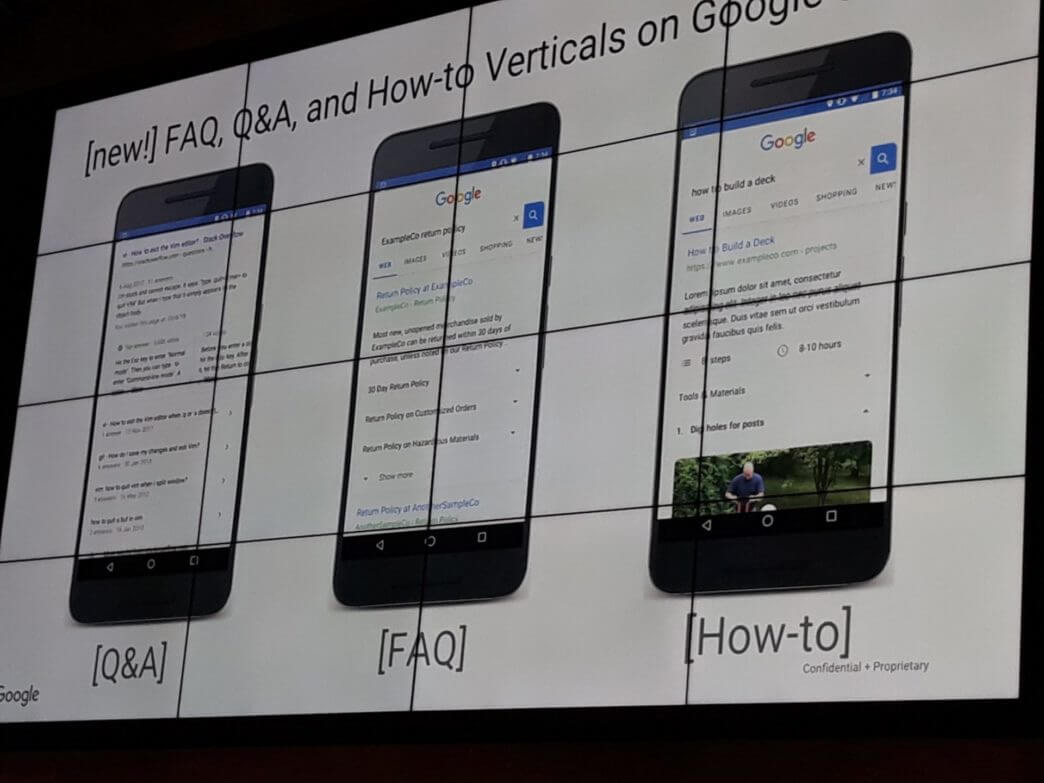
It is advised that webmasters markup content with structured data to be eligible for such previews.
It was also reported that Google is to open up an interest form to allow publishers and webmasters to participate in FAQs and How-to formats.
The markup is available on Schema.org:
1) HowTo markup
2) QA page markup
3) FAQ markup.
Search Console Updates & News
There’s no doubt that last month was an important month for Google Search Console. On 15 August, a fresh batch of features were revealed on the Google Webmasters account on Twitter, including:
- The management of users and permissions
- The ability to add sites and user ownership
- The Mobile Usability report
Posting an article six days later in a Webmasters Central Blog, the search engine clarified some of the new features:
Links Report
The first of which was the new Links report, which shows “Links to your site” and “Internal Links” on the same page.
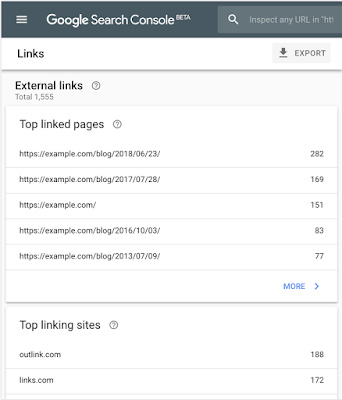
Mobile Usability Report
It also stated that the Mobile Usability report had launched on the new Search Console, with users now being allowed to submit validation and reindexing requests when issues are fixed, in line with other reports in the new Search Console.
User Management and Website Ownership
As for site and user management, Google has added the ability to add and verify new sites, as well as managing a website’s users and permissions directly in the new Search Console within the settings page.
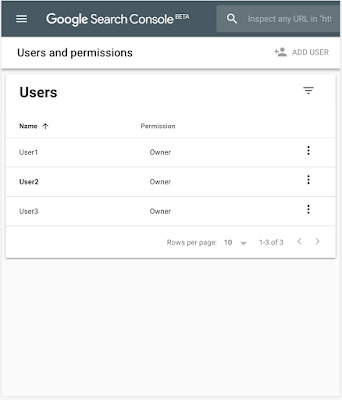
This is particularly useful for site owners so that they can receive notifications for if they are accidentally blocking Googlebot or are getting hacked.
According to an article posted on the Marketing Platform, over the next few months, Google will automatically verify owners in Search Console if they are also verified in Google Analytics. This means that users won’t have to manually configure Search Console and Analytics, although you’ll still have to follow the existing requirements for Search Console ownership.
Other news
Upon being asked by Adam Gent whether the URL inspection tool (released in June (see Roundup for info)) was more up to date than the Index Coverage report, Johh Mueller said:
“The indexing reports are aggregated over time and compiled for reporting regularly (I think 1-2x/week in general?), the Inspect URL tool shows the latest info (doesn’t need to wait for the aggregate report to be updated).”
This means that SEOs using the URL Inspection Tool over Google Search Console Indexing will have more up to date information on their URLs.
There’s a lot to take in from the updates, but all should be of use to webmasters. If you’re a regular reader of our roundups you might remember that in July an SEO discovered upcoming updates in the Search Console JavaScript. Be sure to check out the resulting spreadsheet of updates, some of which are confirmed in the above.
HTTP to HTTPS Migration Notifications
On 17 August it was reported that Google now sends notification warnings to webmasters migrating their sites from HTTP to HTTPS.
Alan Bleiweiss noted on Twitter that Google had told him that 80% of his HTTP pages were not showing up on the HTTPS version of his site.
The notification read:
“Google systems identified that you recently migrated your site from HTTP to HTTPS. Approximately 80% of your HTTP pages that were indexed before migration can no longer be found in either your HTTP or HTTPS site. Therefore, these pages are no longer accessible from Google search. If these pages were moved to your HTTPS site, we encourage you to help us find them and include them in Google Search.”
The notifications were confirmed on Twitter, with John Mueller saying: “A lot of [HTTPS] migration problems come from bad or incomplete migrations, we’re trying to help folks when we spot these issues. Hope this kind of heads up is useful!”
Have a robust plan of action in place to prevent migrations going badly. Although the notifications are useful, it is of course best that they don’t appear in the first place.
PWA Dev Tools
DevTools has now given Progressive Web Application (PWA) developers the opportunity to inspect the manifest.
To do this, simply Open DevTools in Chrome, click the application panel, and then Manifest within the navigation bar.

If the app has a manifest.json file, the options defined will be listed.
You can then test the add to homescreen feature by clicking “add to homescreen”. From here you should see an “add this site to your shelf message.”
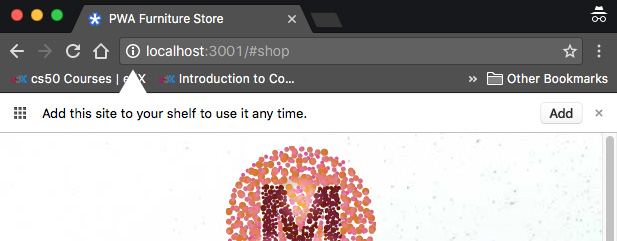
Make sure your website has a manifest file, use the new debugging tools to help validate the JSON.
Bing Updates
Bing Launches Intelligent Features
On 3 August Bing announced a new range of intelligence features, allowing users to estimate and compare prices across a range of providers.
Users are also given insights so that they can make the best decision around prices and savings through a new “deals experience” designed to save money.
Hotel Bookings
Building on its hotel booking experience announced in May, users are now provided with intelligent tips based on price trends and comparisons.
When searching for a hotel, Bing displays booking tips when looking at hotels with competing options (such as higher rated hotels offering a similar price):
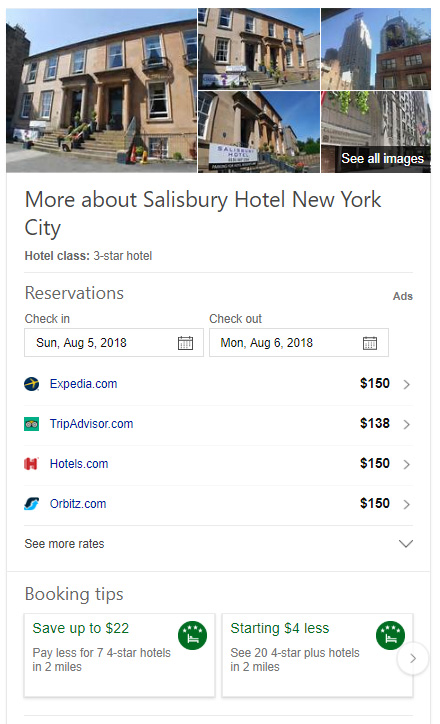
From there, the search engine offers historical price trends, which allows users to browse price trends over time from a single view:
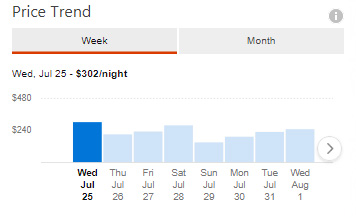
Lastly, the feature provides an overview of pricing by hotel option, which means that users will be able to see the detailed breakdowns side by side.

Home services pricing and scheduling
After partnering with Porch, a home improvement app, Bing can now help users find reliable home service providers, such as plumbers or electricians.
Although currently only available in the US, by searching for home repair services, users will be provided with information such as price distribution based on their local area:
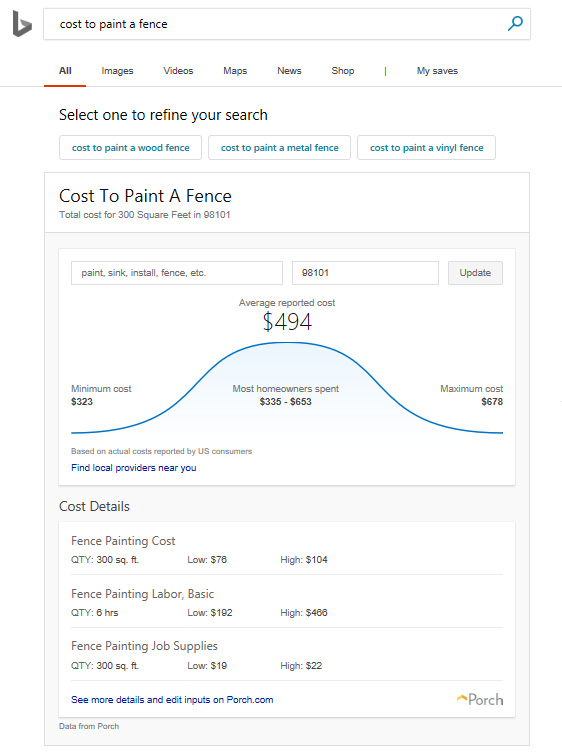
Bing then helps users collect quotes from multiple providers with just a few clicks.
The search engine can provide up to 10 providers similar to the one being viewed by the user and can send out a bulk request for quotes on their behalf:
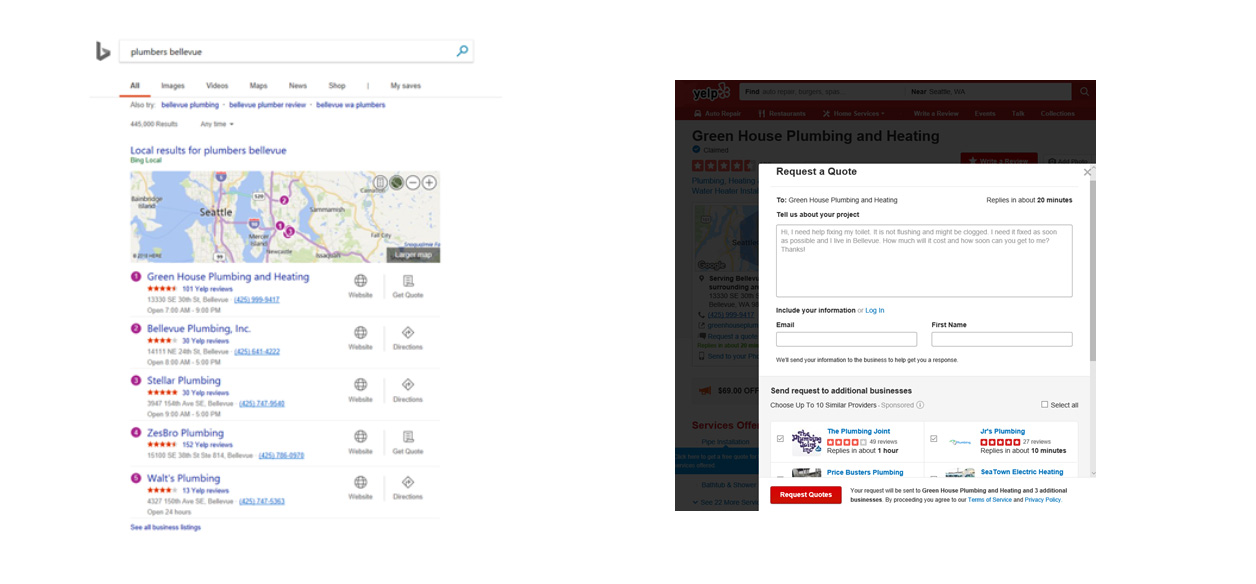
Coupons and deals
For those searching for coupons and deals, Bing now aggregates deals across both first and third-party listings and provides insights such as “expiring soon” coupons or whether offers are based only in-store.
Ensure to provide accurate information on all services and offerings to make the most of Bing’s newest features.
Yandex Updates
Statistics on Unanswered Questions
On 2 August, Chats in the Search was made available to all users.
This means that users are able to chat with companies by pressing the “Chat with the Company” button, which is displayed next to the snippet of the main page of the site.
Sites using Juvosite, Talk-Me, Verbox, Bitrix can add the button. To do so, enter the chat site ID in the Yandex.Dialog platform settings. You can also find detailed instructions in the Help page.
Yandex has also opened an API for other chat platforms to connect their clients to Yandex Search.
Yandex’s aim is to “make communication with quality resources as accessible as possible”, which it clarified in its blog on 28 August, where it discussed statistics on unanswered user questions.
In Yandex.webmaster, site owners are able to view site statistics regarding unanswered user questions:

The search engine has warned that webmasters should monitor statistics to avoid lost users, and that the quality, speed, and frequency of a chat operator succeeding in successfully closing a conversation is taken into account “when ranking along with other data about the quality of the site.”
Include schema to show the “Best question”. Once a community question has been “solved”, add “SOLVED” in the title. This helps with call to action on Google’s search rank position.
Good examples include: Stack Overflow and Microsoft Power BI
Replacing TCI by IKS
On 22 August Yandex stated that it will stop displaying TCI on all resources, as it is to be replaced with IKS.
In its blog, Yandex states that it has been using TCI since 1999, but that a modern approach is needed being that “social networks have developed, the number of mobile sites and users has increased, [and] the era of SEO links has passed.”
IKS takes into account the relevance of a site to its audience, as well as how useful it is and what degree of satisfaction it is able to serve, which is used as an indication of the overall level of trust in the site.
From the last week in August users will have been able to view the overall quality index of their site in Yandex.Webmaster.
The data behind a site’s quality index can be found from Search and any other Yandex service, although Yandex has stated that the algorithm for calculating the quality index will change, so for now, it is in Beta.
Automatically Adding Skills
On 17 August Yandex announced that it had automated the process of adding skills to Yandex.Station.
In order to make skills available, you need to:
- Publish the skill through Yandex.Dialogue to send it to the moderation.
- Apply for the publication of the skill for Yandex.Station through the feedback form.
- Wait for the answer on the results for additional moderation.
The skill will become available if it meets the following requirements:
- It should contain a short greeting, as well as explaining what it allows and how to get out of the conversation.
- The skill should not require pictures or buttons to continue the script.
- A skill should not contain links to enable the script to continue.
- It should not contain signs that occur in the text.
- The skill should not contain large texts for reading.
It is possible to add skills for private and public use within the catalog and a notification will appear once that the skill has been approved. This should take around a week.
When adding a skill, ensure that it is clear and meets Yandex’s criteria. Skills will be withdrawn if they fall short or violate Yandex’s license agreement.
Quickly Remove Index Pages
Yandex has now added the ability for users to quickly remove pages from the index using the “Remove URL” tool, which has the ability delete pages by prefix if implemented in robots.txt.
After just a few hours, the designated page will be removed from the search engine, which can be added once more in robots.txt, before being sent to the re-branch.
If you accidentally publish a page that is sensitive or private, the new ability is a great and useful way of protecting information from the search engine.
Additional Reading
How to view a competitor’s user behaviour.
Dan Petrovice discovered a hack to record user behaviour on his competitors’ websites.
Barry Adams discusses algorithm bias
Google’s algorithm bias has been in the news lately, read Barry Adams’ explanation.
How Penguin and Panda collect information
If you’re wondering how different algorithms collect information, Pedro Dias had a very interesting Twitter conversation about it.
Google extends extra characters of Responsive Search Ads to text ads
The new text ad format is due to roll out in autumn, read all about what to expect.
